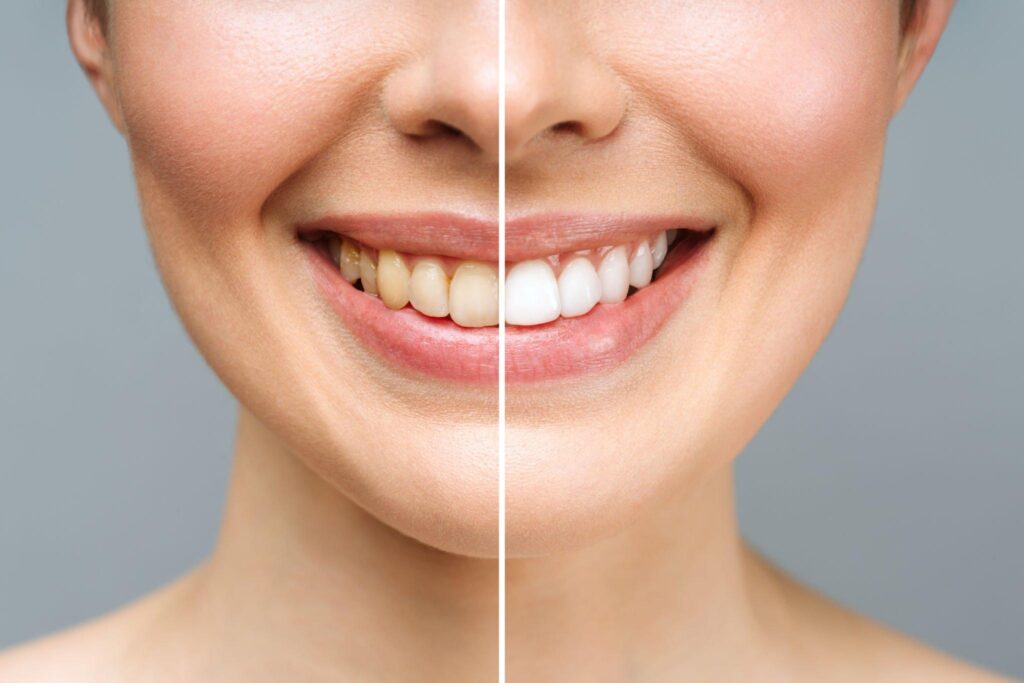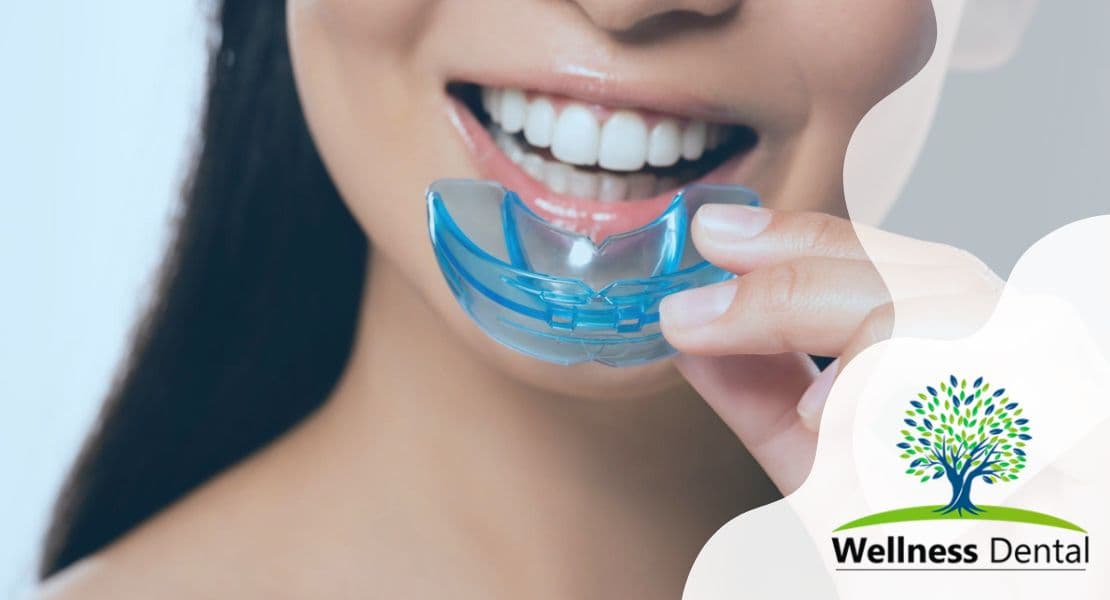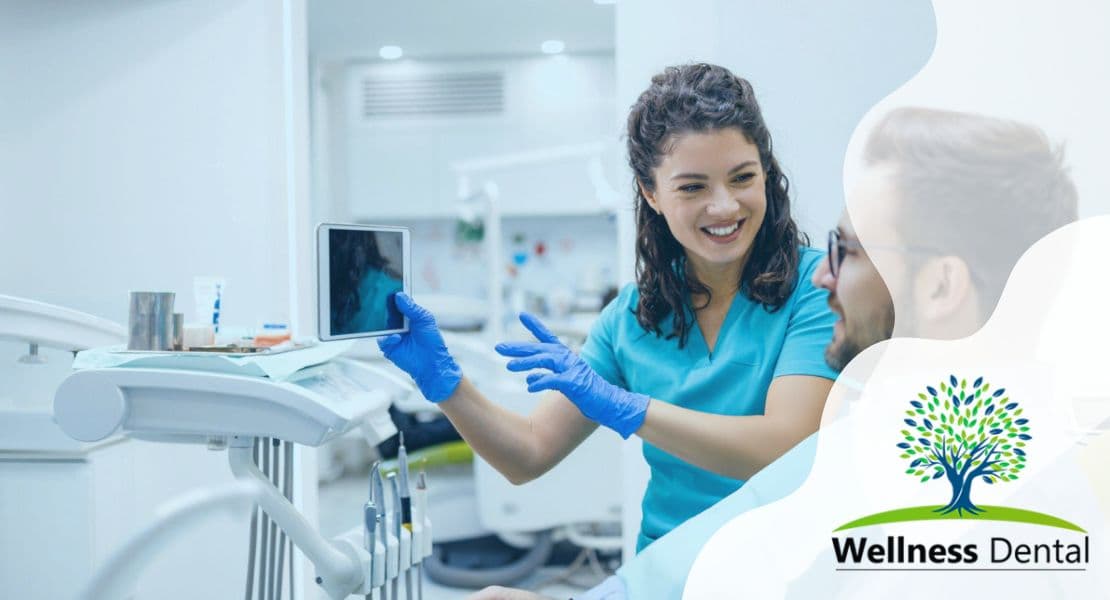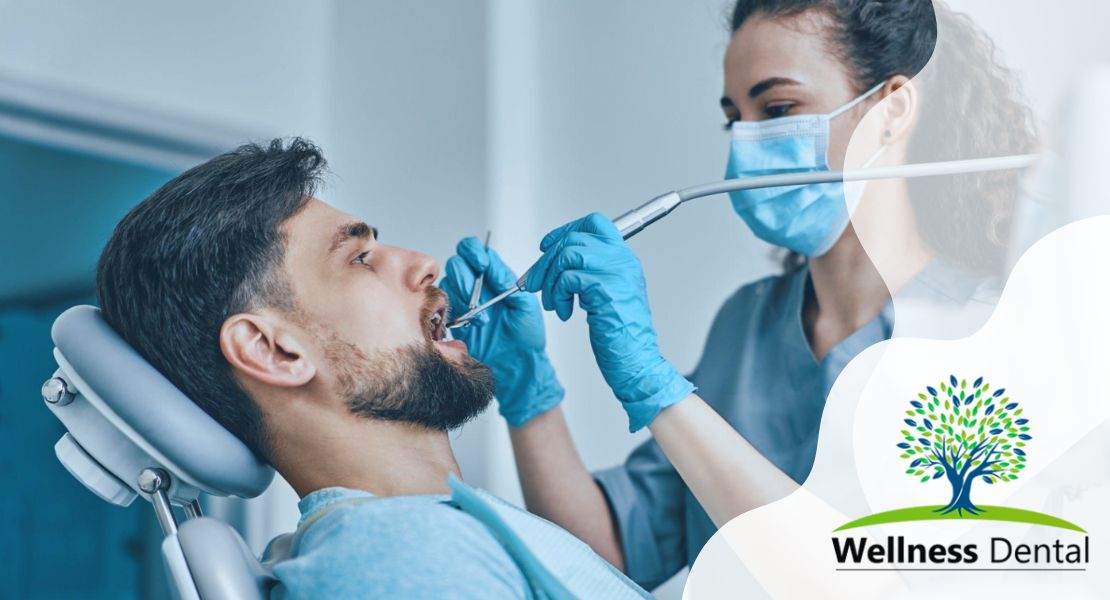A gleaming smile is often seen as the key to confidence, but at what cost? Teeth whitening has surged in popularity as many strive for the perfect Hollywood grin.
What is Teeth Whitening?

Teeth whitening is a cosmetic dental procedure aimed at removing surface stains and discoloration to reveal a whiter, brighter smile. Using various methods, including over-the-counter products and professional treatments, teeth whitening works to lighten the natural color of the teeth without causing damage to the tooth surface.
The main bleaching agents used in teeth whitening are hydrogen peroxide and carbamide peroxide, which penetrate the enamel to reach the discolored molecules, allowing oxygen to break the bonds that hold the stains together.
Understanding the Purpose of Teeth Whitening
The primary goal of teeth whitening is to enhance the aesthetics of a smile. Many individuals pursue teeth whitening to boost their self-confidence, improve their appearance for social or professional reasons, or to reverse the effects of staining caused by foods, drinks, smoking, or aging. While having a whiter smile is aspirational for many, it’s also important to acknowledge that teeth whitening is mostly a superficial treatment and does not necessarily improve oral health.
Types of Tooth Discoloration and Causes
Tooth discoloration can be broadly categorized into two types: intrinsic and extrinsic.
| Type | Causes |
|---|---|
| Intrinsic | Caused by changes inside the tooth, such as age-related yellowing, exposure to excessive fluoride during childhood, use of tetracycline antibiotics during teeth formation, or trauma to the tooth. |
| Extrinsic | Staining on the surface of the teeth from consuming foods, beverages (coffee, tea, red wine), tobacco use, or poor oral hygiene. |
Understanding the cause of discoloration is crucial before choosing a whitening approach, as some treatments may be more effective for certain types of stains. Furthermore, certain lifestyle changes, such as reducing the intake of acidic foods and beverages, can help prevent further discoloration and maintain the results of teeth whitening for a longer period of time.
Effectiveness of Teeth Whitening
The effectiveness of teeth whitening treatments largely depends on the initial condition of teeth, the type of discoloration present, and the method selected. Generally, for extrinsic stains, teeth whitening can yield significant results, contributing to a noticeably brighter smile.
Over time, with consistent application according to product guidelines or professional recommendation, individuals can observe shades of improvement. However, for intrinsic discoloration, over-the-counter products may be less effective, and professional treatment may be necessary to achieve the desired outcome. It is essential to maintain realistic expectations, as results can vary from person to person.
Professional Teeth Whitening Treatments
Professional teeth whitening treatments, administered by dental professionals, generally offer a higher concentration of hydrogen peroxide than at-home products. This contributes to faster and more noticeable results. Dental professionals employ protective measures to minimize gum irritation and tooth sensitivity – common concerns with teeth whitening.
Moreover, they can also provide custom-fitted trays for even application and an improved whitening experience. Professional treatments can include in-office procedures and take-home kits designed specifically for a patient’s dental structure.
Office Treatments vs. At-Home Treatments
| Factor | Office Treatments | At-Home Treatments |
|---|---|---|
| Supervision | Direct oversight by dental professionals | Self-administered, less professional oversight |
| Concentration | Higher concentration of bleaching agents | Lower concentration for safety |
| Cost | Typically higher | More affordable |
| Duration & Results | Faster results, often within one visit | Gradual results, over a period of weeks |
| Customization | Custom trays and tailored treatment plans | One-size-fits-all or minor adjustments |
Both office and at-home treatments have their own pros and cons. Office treatments, while costlier and requiring a dental visit, offer faster, professionally supervised applications. At-home treatments are convenient and more affordable but carry a higher risk of user error and typically take longer to show results.
Over-the-Counter Teeth Whitening Products
Over-the-counter teeth whitening products vary in form, including strips, gels, pens, and toothpaste. While they are more accessible and convenient, the concentration of active ingredients, like hydrogen peroxide, is lower than that of professional treatments.
Therefore, while they can be effective for minor surface stains, they might not provide dramatic results, especially for darker or intrinsic stains. Users should follow the manufacturer’s instructions closely to avoid overuse, which can lead to gum irritation and tooth sensitivity.
Natural Teeth Whitening Methods
In the quest for a whiter smile, some individuals turn to natural methods such as oil pulling with coconut oil or brushing with baking soda. These methods are lauded for their lack of harsh chemicals, making them appealing to those with sensitive teeth or a preference for natural remedies.
Although some anecdotal evidence supports these methods for mild whitening and oral health improvements, they are generally less effective than clinically proven teeth whitening treatments and should be approached with tempered expectations.
Factors Affecting Teeth Whitening Results
Several factors impact the success of teeth whitening efforts, including:
- Type of Discoloration: Intrinsic stains typically respond less favorably than extrinsic stains.
- Age: Younger individuals often see more significant results due to less entrenched discoloration.
- Diet: Regular consumption of staining substances, like coffee and red wine, can affect outcomes.
- Habits: Smoking can decrease the effectiveness of whitening due to nicotine stains.
- Oral Hygiene: Regular brushing and flossing contribute to better whitening results.
- Frequency: Adhering to the recommended treatment frequency, not overuse, optimizes success.
To achieve and maintain the best results, consistency in treatment and maintaining good oral habits are key. It’s also imperative to consult with a dental professional to identify a suitable treatment plan and expectations based on individual circumstances.
Potential Risks and Side Effects

Teeth whitening procedures, while largely considered safe, do carry potential risks and side effects that users should be aware of. Commonly reported issues include tooth sensitivity and gum irritation, which are usually temporary but can cause discomfort. Some individuals may experience adverse effects on tooth enamel, especially if treatments are not used as recommended.
Long-term use can also present compounded concerns, and DIY or unsupervised teeth whitening can increase the risk of these side effects due to improper application or excessive use of the whitening agents. When considering teeth whitening, it is important to weigh these potential risks against the desired outcome of a whiter smile.
Temporary Tooth Sensitivity
One of the most frequent outcomes following teeth whitening is temporary tooth sensitivity. During the whitening process, the active ingredients in whitening products, such as hydrogen peroxide or carbamide peroxide, may penetrate the tooth enamel and irritate the nerve endings, resulting in heightened sensitivity.
This usually manifests itself during the consumption of hot or cold substances and can last for a few days post-treatment. Over-the-counter products for sensitivity, as well as toothpaste designed for sensitive teeth, can alleviate this symptom, and it typically resolves without intervention over time.
| Factors Influencing Tooth Sensitivity | |
|---|---|
| Concentration of Whitening Agent | Higher concentrations can lead to increased sensitivity. |
| Duration of Treatment | Extended exposure may enhance sensitivity levels. |
| Individual Tooth Sensitivity | Inherent sensitivity can be exacerbated by whitening. |
Gum Irritation and Discomfort
Gum irritation is another possible side effect of teeth whitening treatments. This irritation can occur when the whitening gel comes into contact with the gum tissue, causing redness, inflammation, and discomfort. The use of ill-fitting trays in at-home kits can exacerbate this issue. Generally, when whitening products are applied correctly, and preventive measures are taken, such as using custom-fitted trays or gum barriers during treatment, the risk of gum irritation is minimized.
Adverse Effects on Tooth Enamel
The whitening agents in both over-the-counter and professional treatments are safe for tooth enamel when used as directed. However, misuse or overuse can lead to enamel degradation. Whitening products are not meant to be used continuously or in higher concentrations than prescribed. Such practices can weaken the enamel over time, making teeth more prone to decay and damage. It’s crucial for users to adhere to directed frequencies and methods of application to protect their tooth enamel.
Effects of Long-term Use
Prolonged or repeated use of teeth whitening products over a considerable period of time can compound the aforementioned risks and lead to more serious oral health concerns. Chronic sensitivity, persistent gum irritation, and enamel erosion can impact the overall health of teeth. Furthermore, an obsession with teeth whitening might mask underlying issues such as cavities or the need for more significant dental work.
Risks of DIY and Unsupervised Teeth Whitening
Unsupervised or DIY teeth whitening can significantly increase potential risks due to the lack of professional guidance. Incorrectly applied treatments or the temptation to use excessive concentrations can result in uneven whitening, overbleaching, and damage to both teeth and gums.
Dental professionals can tailor treatments to individual needs and monitor oral health throughout the process, making professional supervision the safer route for those considering teeth whitening.
The Role of Dental Professionals

Dental professionals play a pivotal role in ensuring teeth whitening is performed safely and effectively. They possess the necessary expertise to evaluate an individual’s oral health and determine the suitability of various whitening procedures. It is these professionals who apply their knowledge of dental anatomy, the causes of tooth discoloration, and the specifics of treatment products to minimize risks.
They also offer insight into the types of tooth discoloration that will respond best to treatment—whether intrinsic or extrinsic—and can recommend professional options that over-the-counter products cannot match.
Consultation with a Dentist
Before embarking on any teeth whitening endeavor, scheduling a consultation with a dentist is crucial. The dentist can evaluate the current state of your oral health, identifying any conditions, such as cavities or gum disease, that must be addressed prior to whitening.
Additionally, a dental professional can assess how sensitive your teeth are to provide a more personalized treatment plan. They can also help set reasonable expectations on the degree of whiteness achievable, considering your natural teeth color and the history of previous dental work.
Professional Treatment Plans
A professional treatment plan created by a dentist is tailored specifically to the individual’s oral health needs and whitening goals. After an initial consultation, the dentist may offer in-office treatments, which often involve a higher concentration of hydrogen peroxide under closely monitored conditions. Professional treatment plans may include:
- Determining the right concentration of whitening agents
- Selecting the appropriate method of application
- Providing protective measures to reduce gum irritation
- Planning the frequency and duration of treatments to minimize the potential risks
Importance of Regular Dental Check-ups
Maintaining regular dental check-ups is imperative when it comes to oral health and the longevity of teeth whitening results. These check-ups allow the dentist to monitor the health of the teeth and gums post-treatment and to address any issues such as tooth sensitivity or gum irritation promptly.
Furthermore, regular professional cleanings can remove surface stains, further enhancing a brighter smile while preventing the build-up of plaque that can lead to discoloration and decay. Regular visits also provide an opportunity to refresh the whitening treatment under professional guidance as needed over time.






